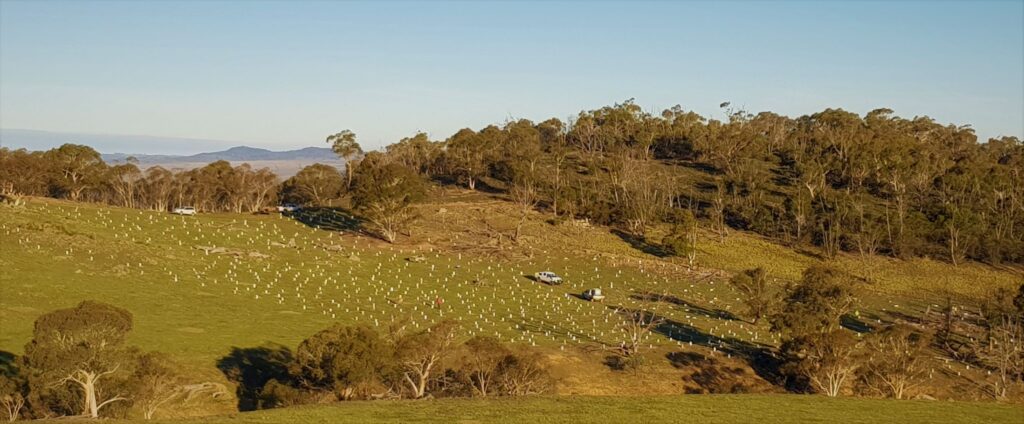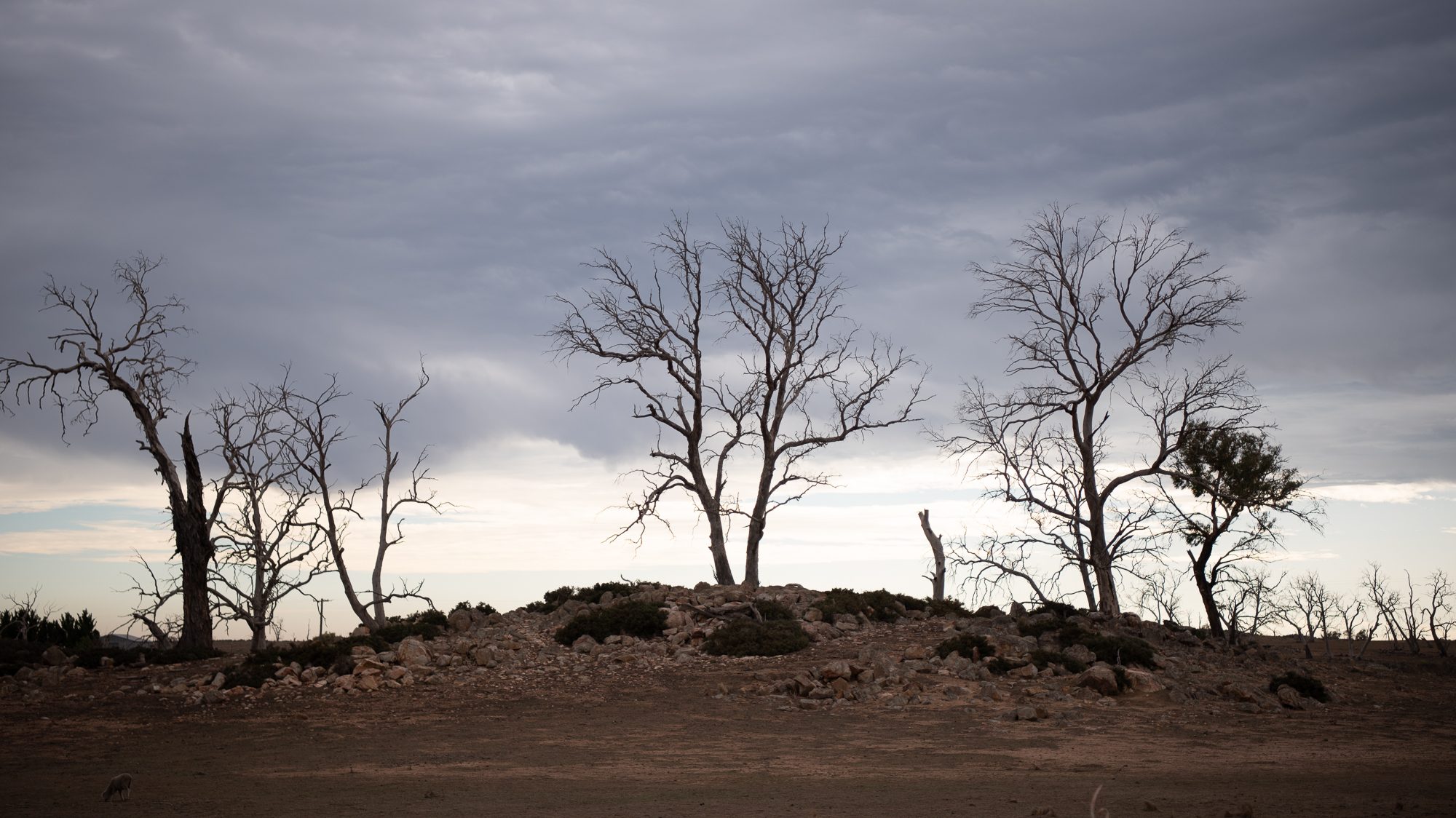It has become a familiar sight across the western parts of the Monaro landscape: stands of skeletal trees stretching far across the granite plain. Since the early 2000’s our local environment has suffered greatly from this phenomenon known as dieback, large swathes of dead trees being an indicator of our rapidly changing environment in the face of climate extremes and impactful land management regimes. Upper Snowy Landcare Network has delivered a number of on-ground regeneration projects in response to the Monaro Dieback, aiming to restore health to our heavily degraded landscapes.
Project Impact Summary

Since 2016
| 55 750 | 51 | 76% |
| Trees Planted | Properties | Median Survival Rate |
Project Background and History
In the early stages, with funding from the Tending the Grassroots 2 Caring for our Country Grant, the Berridale Rocky Plain Landcare group established one main and two smaller demonstration sites to show techniques to restore areas affected by the Eucalypt dieback that has devastated the E. viminalis woodlands in the local Landcare groups area.
The work was undertaken on the presumption that the main causes of the dieback include the stress created by the drought, the enhanced conditions for the proliferation of the gum weevil and Christmas beetles defoliating stressed trees and the decline in the small bird population that would otherwise predate on the increased insect populations.
The techniques employed at the demonstration sites include protection of viable remnant trees using systemic pesticides, protection of regenerating trees by stock exclusion fencing and revegetation works using both E. viminalis stock and alternative Eucalypt species that are endemic to neighbouring vegetation communities.
The immediate flow on from this work meant the Upper Snowy Landcare Network (USLN) took up the mantle and has worked continuously to address the issue on a landscape scale.
Initial talks were held with Sydney University (who undertook some trial work in the dieback issue) with Greening Australia later coming on board with the ANU to scope out future projects. There was identification of the main corridors for connectivity approximating a north/south and a west/east trend through the affected areas as the first priority in landscape restoration.
This initial effort and the fact something needed to be done to fast track the replacement of lost biodiversity, led USLN to install four 1 ha revegetation (native tree and shrub) plots along the visual Hwy between Cooma and Berridale.
More recently with funding received by Greening Australia to manage a project entitled Monaro Comeback, USLN are working in a close partnership to install more biodiversity plots and assist Greening Australia to establish multiple provenence plots to investigate sub species of trees that may be better able to withstand dieback episodes into the future.
Take a look at the project updates to see where we have been and where we are going.
Dieback Research
Read about some of the research on dieback here: Monaro Dieback summary
And here is an article from the ANU about dieback on the Monaro: http://www.anu.edu.au/news/all-news/death-of-a-landscape-why-have-thousands-of-trees-dropped-dead-in-new-south-wales
Dieback news
In the Media
Monaro Dieback brings science and Aboriginal knowledge together – February 2016
Historic Updates
Monaro Services Award + more funding + more plots – November 2016
Dieback prep work commences + project manager starts – February 2016

